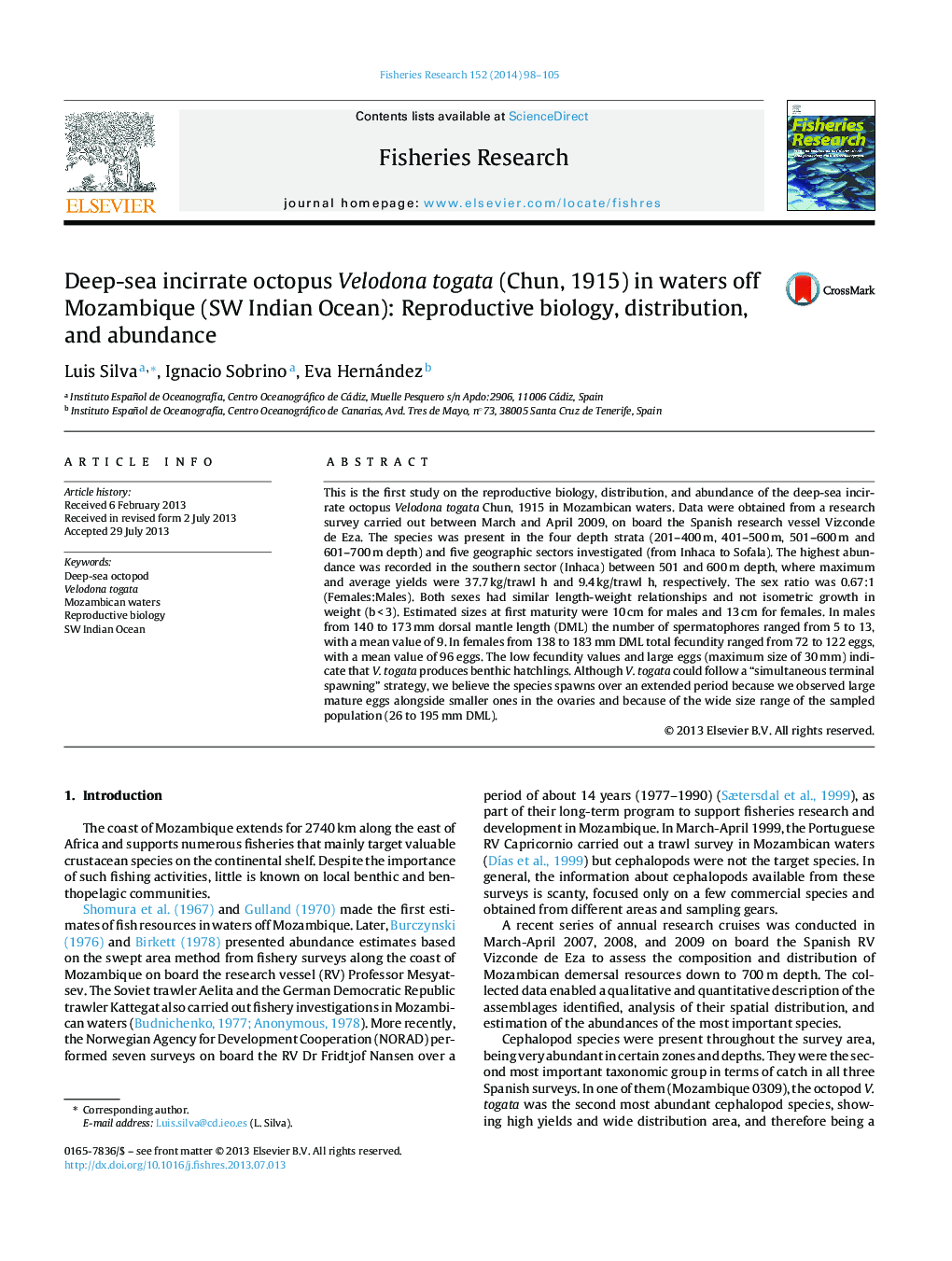| Article ID | Journal | Published Year | Pages | File Type |
|---|---|---|---|---|
| 4543070 | Fisheries Research | 2014 | 8 Pages |
This is the first study on the reproductive biology, distribution, and abundance of the deep-sea incirrate octopus Velodona togata Chun, 1915 in Mozambican waters. Data were obtained from a research survey carried out between March and April 2009, on board the Spanish research vessel Vizconde de Eza. The species was present in the four depth strata (201–400 m, 401–500 m, 501–600 m and 601–700 m depth) and five geographic sectors investigated (from Inhaca to Sofala). The highest abundance was recorded in the southern sector (Inhaca) between 501 and 600 m depth, where maximum and average yields were 37.7 kg/trawl h and 9.4 kg/trawl h, respectively. The sex ratio was 0.67:1 (Females:Males). Both sexes had similar length-weight relationships and not isometric growth in weight (b < 3). Estimated sizes at first maturity were 10 cm for males and 13 cm for females. In males from 140 to 173 mm dorsal mantle length (DML) the number of spermatophores ranged from 5 to 13, with a mean value of 9. In females from 138 to 183 mm DML total fecundity ranged from 72 to 122 eggs, with a mean value of 96 eggs. The low fecundity values and large eggs (maximum size of 30 mm) indicate that V. togata produces benthic hatchlings. Although V. togata could follow a “simultaneous terminal spawning” strategy, we believe the species spawns over an extended period because we observed large mature eggs alongside smaller ones in the ovaries and because of the wide size range of the sampled population (26 to 195 mm DML).
